More-Than-Planet, remote sensing and habitability
Published 30 August 2022 by Annick Bureaud
Inaugurating an ambitious three-year program, the More-Than-Planet exhibition is now on view at the Old Observatory of Leiden (Netherlands) though December 31, 2022.
Summer 2022 was marked on one hand by images from the James Webb space telescope – gazing out at the infinity of stars – and on the other by satellite images of forest fires or aerial shots following a symbolic cargo of grains crossing the Black Sea – observation of the Earth. Between “star gazing” and “remote sensing”, one of our most pressing challenges is habitability – of our planet, potentially of other planets, of the cosmos in our ongoing quest for traces of life. Quests for knowledge and survival are inextricably intertwined.
How to describe and draw the portrait of a planet? Through its geology, its place in a galaxy, its biosphere, its resources, its infrastructures, its atmosphere, and many more approaches. What kinds of fantasies come into play? Scientific, mythological, poetic, of exploration and conquest, exploitation, even irrational conspiracies such as Flat Earth and many others.
Embracing this complexity, the More-Than-Planet project aims to dialectically confront two views that are sometimes opposed: the desire for extra-terrestrial space and taking into account the Earth as a global living system. More-Than-Planet examines each of these views through the other, in a comprehension-apprehension of Earth through Space and of Space through our planet.
In a symbolic, perhaps involuntary gesture, the first More-Than-Planet exhibition opened on July 1 and extends through December 31 in Leiden, in the world’s oldest active university observatory, established in 1633 and situated in the Hortus Botanicus, the Netherlands’ oldest botanical garden, created in 1590. These two institutions have hosted the most illustrious scholars in their respective disciplines, along with the evolution of knowledge, beliefs and perspectives over centuries.
The way in which we draw the portrait of our planet is crucial in regard to the current issues surrounding Earth and Space, as well as our responses to them, as objects of political, ideological and representational confrontations. Miha Tursič and Waag Futurelab in Amsterdam, the curators of this exhibition, have chosen to focus on remote sensing and telepresence: remote observation of the Earth and a mediatized perception that is augmented by space technologies. The five works presented in More-Than-Planet are screen-based installations. Three of them could be qualified as activist artworks.
Sensible zone
By now it’s a cliché to say that the Earth is primarily covered in seas and oceans. Yet their role in the planetary system and the impact that climate change has on them is barely perceptible to us. Oceans and Earth are linked. Territorial Agency’s Sensible Zone targets this narrow stretch – from less than 200 to more than 200 meters – where water and land meet, a zone that is fragile and sensible to the slightest disturbance. Based on various scientific data, Territorial Agency created an installation composed of vertical screens that scroll various dynamic visualizations of the current state of predicted disasters. With its icy and seductive esthetic, this work is still a bit difficult to understand without the complement of an outside explanation.
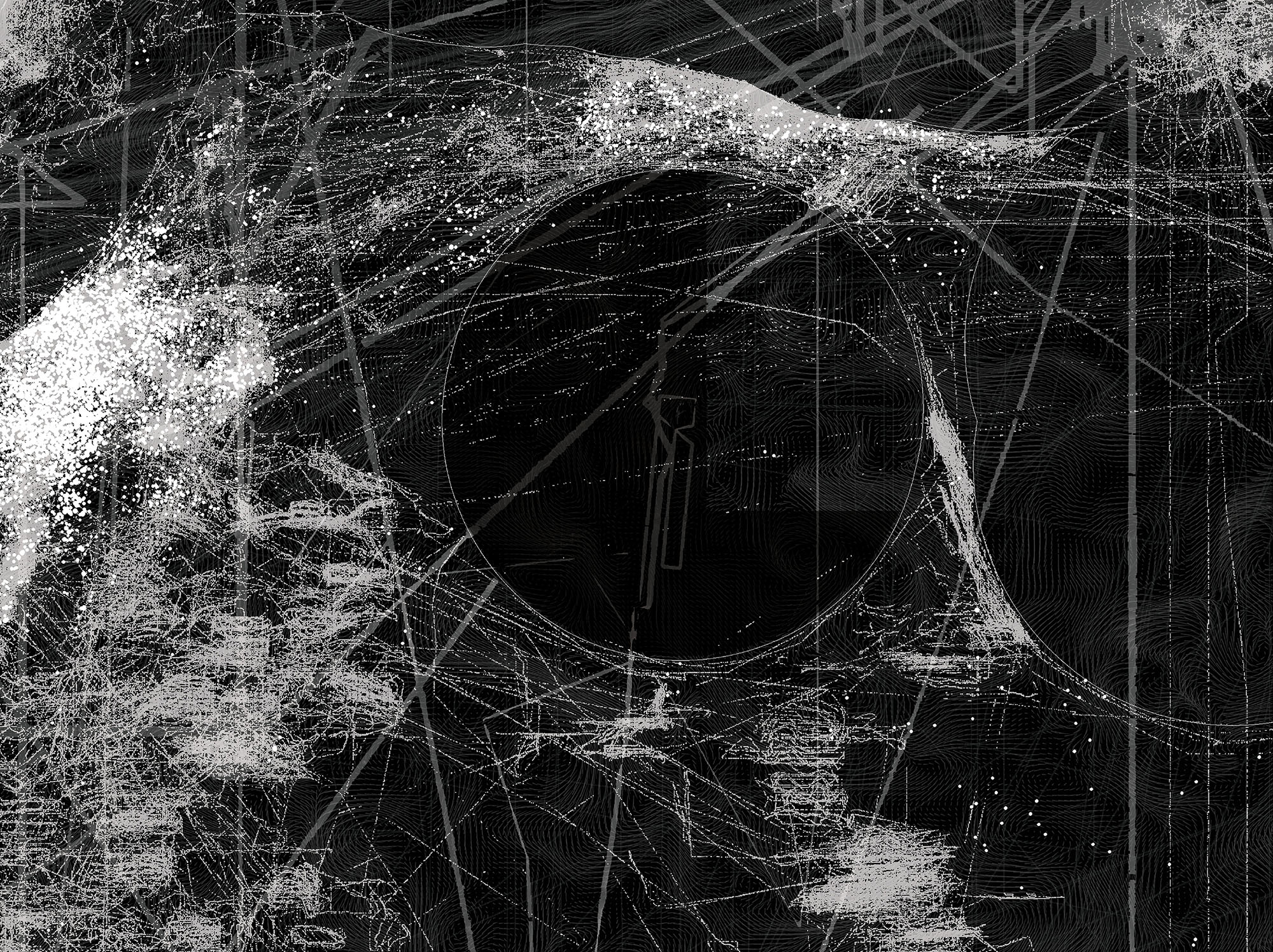
Asunder by Tega Brain, Bengt Sjölén and Julian Oliver is in some ways the counterpoint of Sensible Zone, or its next phase. What are the solutions for mitigating the scale of climate change? Ask an AI for help. Add to it a dose of satellite images, a climate simulator, and Machine Learning techniques to produce images – the result is fictional scenarios, which theoretically allow for adapted responses that are in reality largely absurd and unfeasible. Asunder’s tech-savvy esthetic traps viewers into paying it no more than superficial attention, a bit like experts and promoters of a greeting by a technology that hasn’t been invented yet.
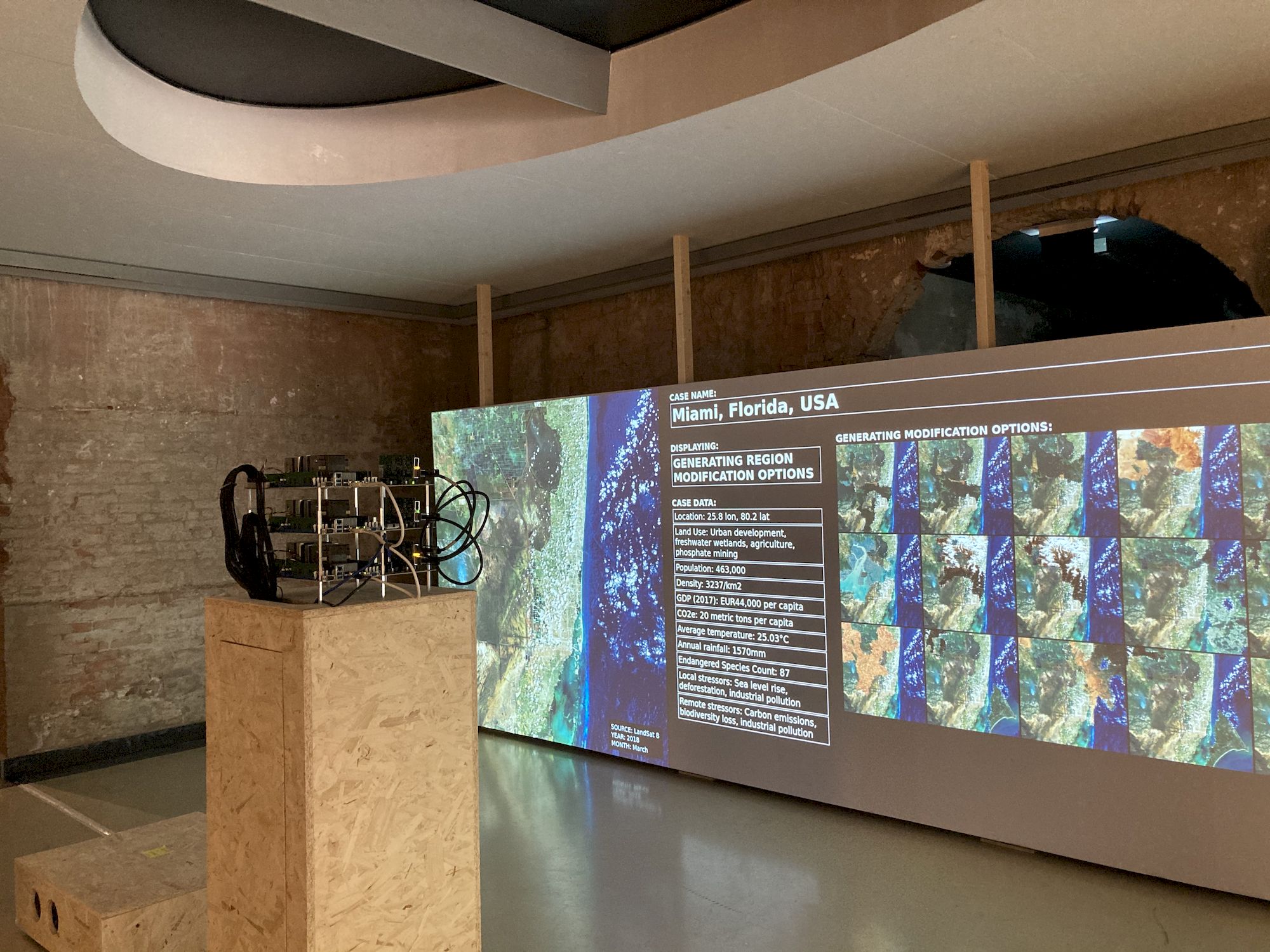
What’s the difference between an artistic work and a documentary used for a court trial? Nothing, in the case of If toxic air is a monument to slavery, how do we take it down?. Forensic Architecture’s video essay presents an undeniably high quality of visual writing, going beyond what might seem like fascination for the scientific images of the previous projects. Weaving together what the human eye sees and captures with instrumental images and testimonies from relevant people, the film repositions humans and life at the center of the narrative. The humans in question are the victims and perpetrators – in the past, of slavery, and in the present, of industrial chemical pollution. In Louisiana, along the Mississippi River, on a territory of former sugar cane plantations, now stands a “Petrochemical Corridor” of factories making the air in that zone among the most toxic in the United States.
If toxic air is a monument to slavery, how do we take it down?, trailer:
Sand, from Kuwait to Mars
The two other works in the exhibition, while also making use or reference to space technologies, distinguish themselves from the others’ more direct eco-political approach. They also include tangible objects alongside the videos.
Our dear GPS, which helps us to find our way through the tortuous streets of Venice or elsewhere, is also a useful war instrument. A Space War Monument was created by Dani Ploeger for the Kuwait Pavilion at the Venice Architecture Biennale to commemorate the 30th anniversary of the end of the first Gulf War (1990-91). This war has also been called “The First Space War”, during which space technologies were widely deployed. Ploeger confronts the image of this quasi-abstract “technological war” with the reality of the field, which is hardly as clean. His resulting “land art” is a 100-square-meter area of sand in the desert created by a GPS-controlled bulldozer – an ephemeral monument that attempts to erase all traces of the dead, mines and weapons.
A very short video documents the construction of the piece. But can we be sure of what the images really show? Claiming to be set in the Kuwaitian desert, this Monument was actually built on a European beach. Very real, on the other hand, are the tangible traces: two small squares framed on the wall. One is made from sand sampled from the battlefield in Kuwait, the other with a gold leaf. These objects, almost insignificant when compared with the imposing technological and war machinery, reveal themselves as contemporary monuments to the dead.
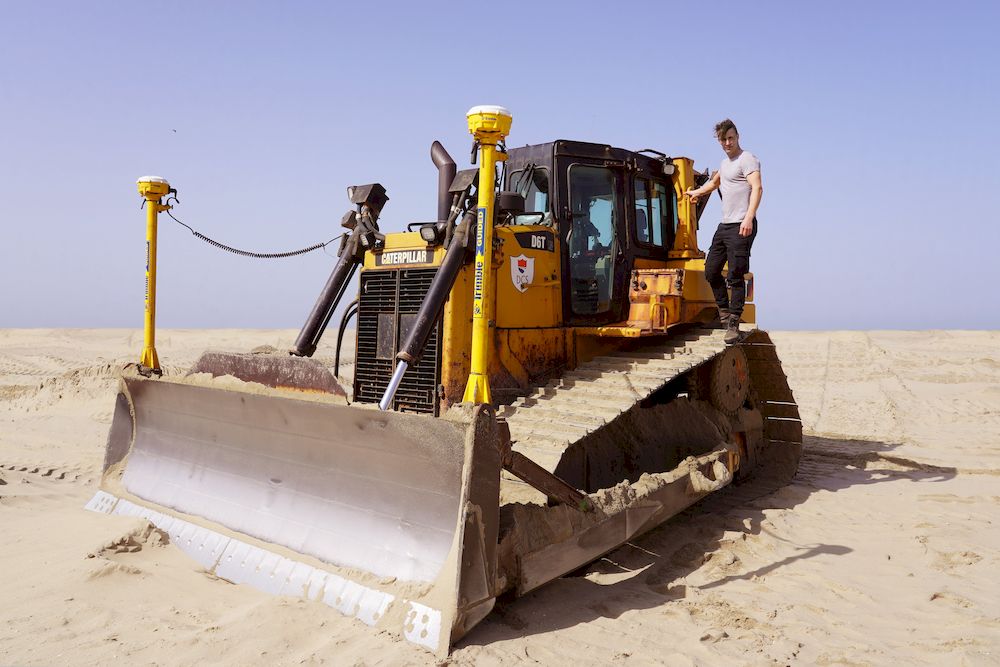
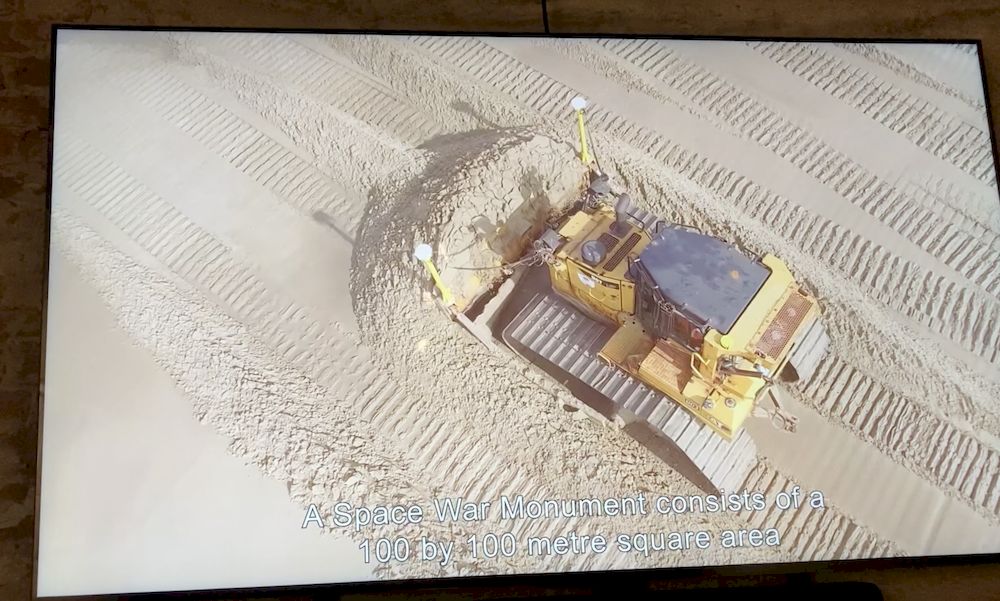
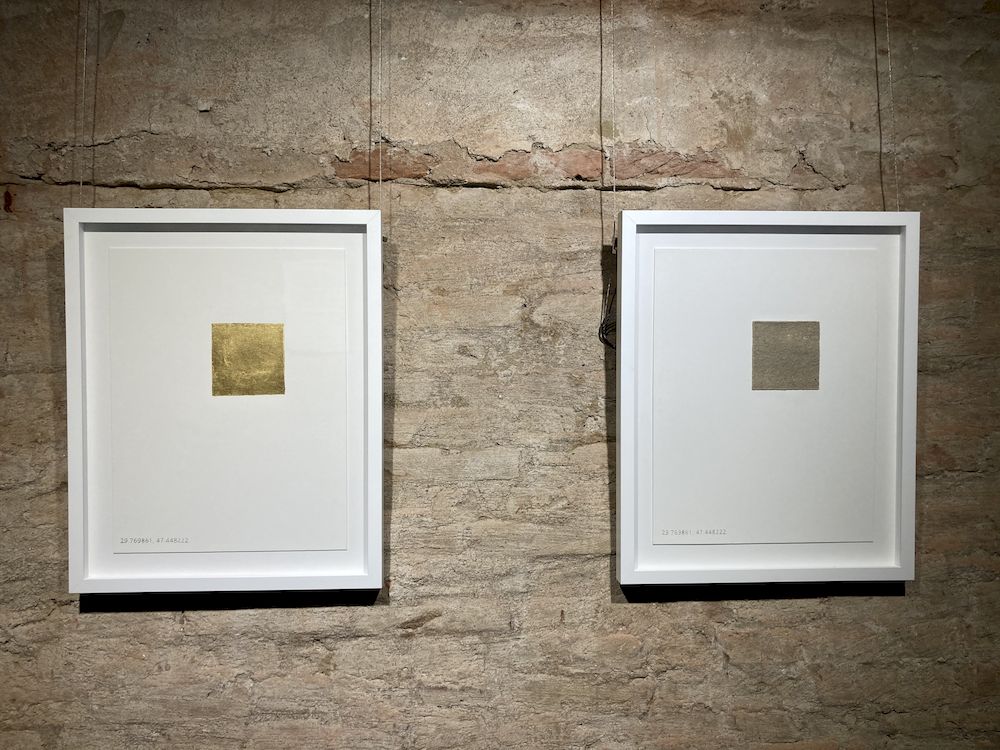
On Earth, we can always go and check. At least that’s what we think, with this feeling of knowing the far reaches of the planet through the constant stream of photos, illustrations, models and representations that surround us. But on Mars? On Mars we rely on a mediatized perception that both reduces our senses to a single eye and augments our field of vision to the spectrum covered by these instruments. Minna Långström invites us to embark on this journey with her magnificent and masterful installation Photons of Mars.
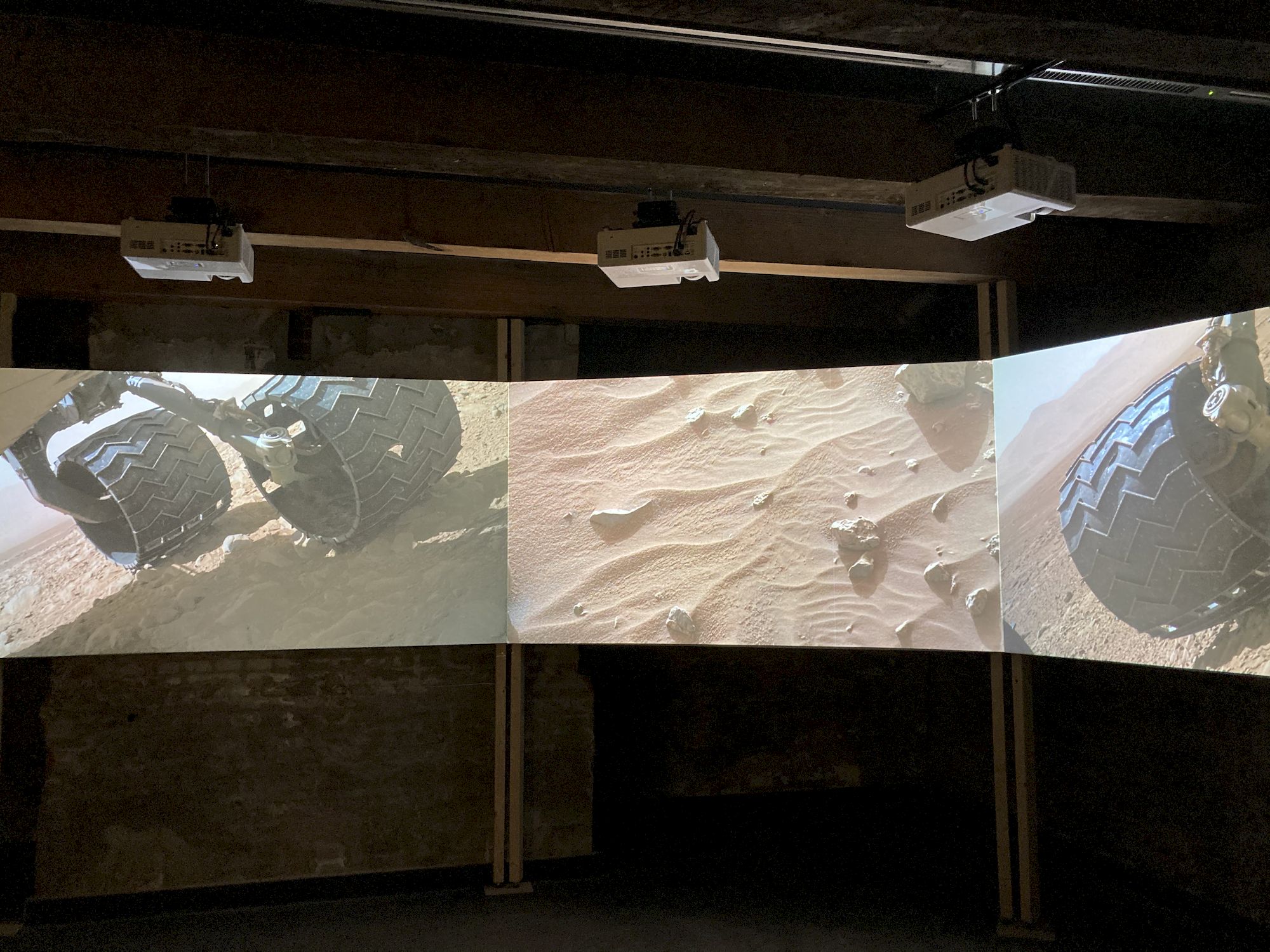
On three big screens, she juxtaposes images of Mars: shot from rovers within the spectrum of human vision by high-definition cameras; shot by several different scientific instruments on board; captured by the control center and the cockpit of the rovers, with allusions to the fictional images that fill our imaginations. These three simple screens placed in a row are more relevant than any virtual reality set-up: we are on Mars. This little corner of the planet becomes just as familiar to us as to the pilots of the rovers or to the scientists who scrutinize and analyze it day after day. Like them, we inhabit the substitute bodies and seeing machines of the rovers, we are telepresent on Mars. No doubt the similiarities between Earth and Mars facilitate this sensation, but it’s especially the artist’s visual composition, the strength of the poetry and the strangeness that paradoxally give the red planet a real density.
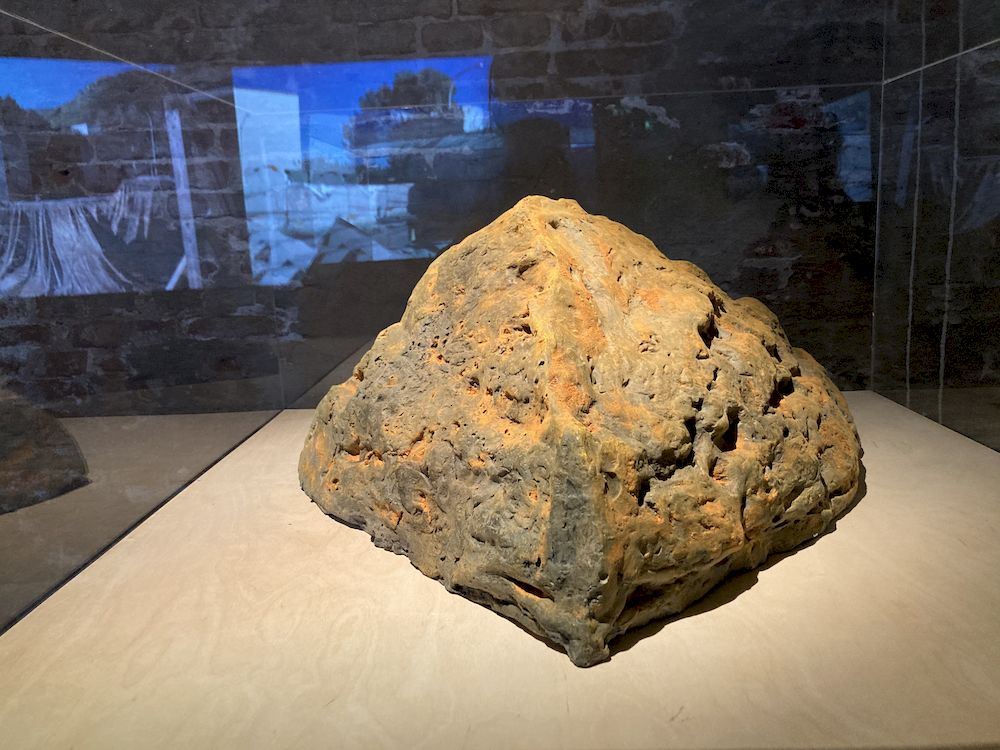
Photons of Mars is accompanied by a sculpture, that of the Martian rock nicknamed “Jake Matijevic” as a tribute to the engineer and mathematician who played an important role in creating the Curiosity rover, and who died just a few days before its landing on Mars. Displayed in a case opposite the video installation, it appears to be an ancient artifact exhibited in a museum, that we recognize, without really knowing it. Here begins our responsibility toward the planet Mars. What will we do with it?
Ever since we learned about B612, the home asteroid of The Little Prince, we know that inhabiting celestial bodies is not easy, and that these can be fragile. There is no Planet B, and we are debating if it is desirable. Meanwhile, one thing is certain: we must reconsider the multitude of imaginary environments in relation to our planet Earth, considered as a conceptual whole.
The More-Than-Planet exhibition is on view at the Old Observatory of Leiden through December 31, 2022.
More-Than-Planet (2022-2025) is an international collective project between Stichting Waag Society (NL), Zavod Projekt Atol (SI), Ars Electronica (AT), ART2M/Makery (FR), Northern Photographic Centre (FI) and Leonardo/Olats (FR), co-funded by the Creative Europe programme of the European Union.
